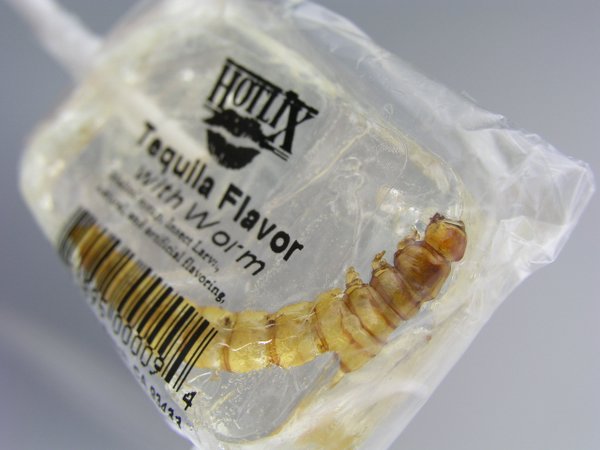.jpg) |
| Mm... grubs on a skewer |
As a member of Club Ento, also known as the weird people who eat
bugs on campus, I feel I'd be remiss in my duties if I didn't share anything
about eating bugs this class.
First, I'll give general
overview of entomophagy, or the practice of eating bugs: Over 1,700
species of insect are edible out of the 1.1 million scientists have discovered
and named. 2.5 billion people around the world eat bugs regularly, and
that number doesn't account for those of us who only swallow a few spiders a
year while asleep — in fact northern Thailand's primary reason for eating
insects is "insects are tasty." While seen as uncivilized or
disgusting, eating many bugs has incredible benefits, and the United Nations
issued a report in 2013 about these benefits and advocating for more widespread
entomophagy. These benefits can fit into two primary categories: health
and sustainability. Insects have more protein — crickets are ~65% protein by bodyweight — and more vitamins
and minerals by far than beef and other livestock options, while also
containing omega-3 acids and a generous amount of fiber, making for a great
dietary option for everyone, especially athletes, who provide a growing market
for cricket protein powder and cricket protein bars. Also, insects don't
carry similar diseases to humans, meaning we can't catch things like swine-flu
and mad cow disease by raising insects for food.
| Deep-fried insects at a market in Bangkok, Thailand |
The sustainability benefits
include using much (MUCH!) less water, land, and other resources for the same
amount of weight of other foods, especially our favorite meats like beef,
chicken, and pork. This, along with the health benefits, makes for an
incredibly attractive food-source in the coming years as the global community
fights climate change and tries to leave a better world for our children.
There are very few, if any
(and I doubt there are), better options for large-scale agriculture or animal
husbandry. This has implications that reach the Adirondacks.
Because of the hard farming conditions, insect farming could have a very
significant impact on Adirondack diet and culture of the future in a more
sustainable and environmentally conscious world. Also, many edible
insects thrive within the Adirondacks. As Dan Crane says in his The
Edible Adirondacks Adirondack Almanac post, "Although it probably goes without saying, the larger
the animal, the more effort and skill involved to get it into your mouth and
down your throat. Unless carrying a firearm or highly skilled in snare and trap
design, have the proper licenses and in the appropriate hunting season, it is
it is probably best to stick with the invertebrates, which only requires
plucking from surrounding vegetation, ripping apart a log or digging within the
forest floor."
 |
| Tequila flavor with worm or tequila-flavored worm?? |
As of this year, Hamilton's
Club Ento built our first cricket farm in the Science Center, where I'll start
volunteering once we get a new shipment of crickets (because we're fairly
inexperienced, the first group died pretty quickly from unknown reasons).
I haven't begun yet, but I'm super excited to play a role in possibly the
first non-personal cricket farm in New York State. If any of you are
interested in building your own cricket farm, they're easy and cheap to make
and are easily manageable (despite Ento's early hiccups), and they provide a
consistent high-protein and high-fiber snack. I wouldn't suggest insect
farming if you already have a shellfish allergy, however, because the allergy
often applies to many edible insects as well. I also wouldn't suggest
eating insects you find around campus outside of the cricket farm because
Physical Plant sprays toxins like pesticides and herbicides all over, poisoning
the insects, which would lead to negative health impacts for humans if enough
toxins are ingested. But please come farm with me next semester! It'll be so much fun and a great opportunity to learn about sustainable food sources while eating some tasty snacks! Ento often gets shipments of cricket-protein bars and other insect-based treats to share with the campus community, and you'll get first dibs on those tasty yogurt-covered mealworms!
Sources:
http://big.assets.huffingtonpost.com/Crawling_Snacks_2_0.png
http://www.fao.org/forestry/edibleinsects/84664/en/
http://students.hamilton.edu/clubento
(and tabs)
http://www.adirondackalmanack.com/2013/12/dan-crane-edible-adirondacks.html
No comments:
Post a Comment